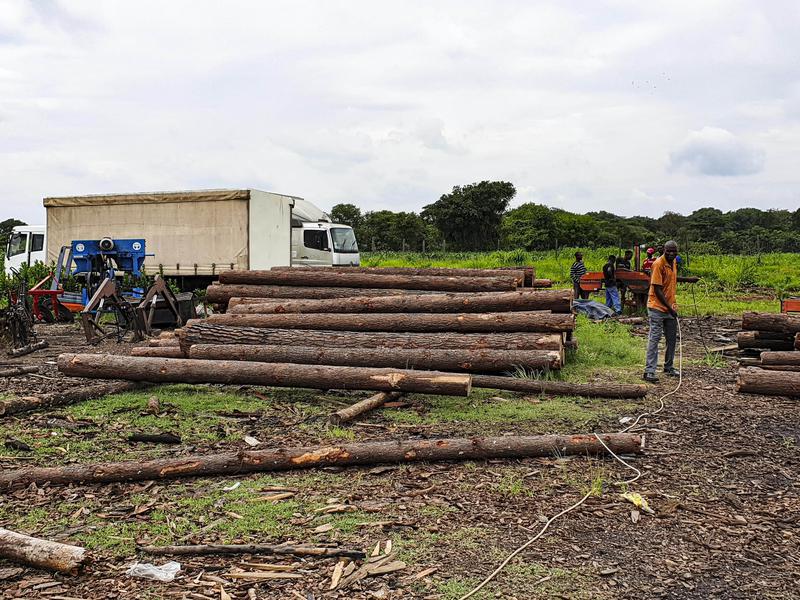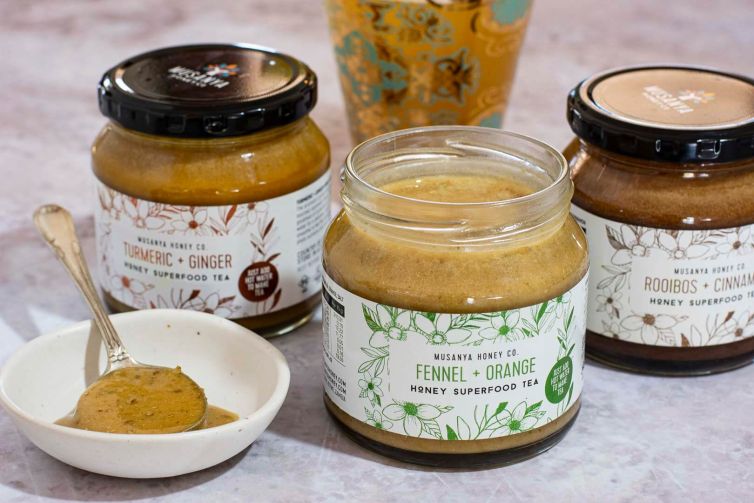a buzz in the factory
The buzzing heart of the Musanya Honey project is the production of our hives in the Copper Belt town of Ndola which employs almost 40 local artisans to keep up with manufacture. The hive is based on the traditional Kenyan top bar hive. Top bar hives allow access to the honeycomb by simply raising the lid. Beneath, series of bars each holds a section of honeycomb that is easily removed and replaced.
The hive is based on the traditional Kenyan top bar hive. Top bar hives allow access to the honeycomb by simply raising the lid. Beneath, series of bars each holds a section of honeycomb that is easily removed and replaced.
Johan Jacobs modified the design for production in a factory with simple power tools. Apart from making it easier to manage on the production line, he made the hive more robust. Cut from sections of locally harvested timber, it is assembled and slots together in a modular form.


It’s plug-and-play design makes it perfect for African conditions. It is strong, and light enough to be carried by one person or loaded on a bicycle. Simple construction make it easy to use, so training newcomers to beekeeping is an elementary task.
Siting a woodworking factory in Ndola to produce the hives for Musanya was a strategic move. There is a pool of trained artisans from which to draw skilled labour. Furniture and other woodworking facilities in the area have attracted the skills to the region.
Some of the team members are magicians on the cutting machines. There is a great spirit of fortitude on the production line. Despite simple facilities and pretty basic conditions, the workshop operates efficiently, easily filling its current quota of hives.
Ndola is also the site of one of ZAFFICO’s sustainable pine plantations. ZAFFICO is the Zambian Forestry and Forest Industries Corporation established to meet a growing demand for timber in the region.
With carefully managed pine and eucalyptus on offer, this state-owned enterprise is growing the number of hectares under trees. Purchasing the raw timber from them and processing it for our hives ensure Musanya is making an active contribution to the economy before a single drop of honey is harvested.


Wood is ordered and arrives at the factory as raw logs. Owners Paul Els and Johan Jacobs have been working with timber for over 15 years, and have trained their team to process the logs perfectly.
Little is wasted. Thinner logs are processed into battens to hold elements of the hive boxes or lids together. Thicker trees become the planks that form lids or sides of the hives. There is a constant flow through the system producing beautifully uniform stacks of hives-in-the-making.
Thanks to Paul’s practical woodworking experience in regions where making do is a way of life, the factory has some ingenious hacks on the production line.
For instance, if hives were fabricated from untreated, green timber they would not last long where the bees are at work. They have to stand extreme heat and bone-dry conditions as well as seasonal mist and heavy rains. Rot is a very real problem for traditional bark hives which tend to last 2 seasons at best.
Hence the timber must be cured, or seasoned. In the dry months, it is simple enough to lay planks out in the sun to dry. However, the rapid uptake of the project in our host communities has meant rapid scaling of production.
Paul’s solution was to build a makeshift kiln out of an old shipping container. He can process about 15 cubic metres of wood every 4 days. This turnover allows them to produce roughly 600 hives per week for Musanya. They could produce more using the machinery on hand, Paul would just need a clever idea for a bigger kiln…
Once the planks are cured and ready, the team gets cracking on making up components. Different sections of the factory work on specific sections. Jigs are set up so that timber is just drawn from the correct bays, laid in the frame and fixed with a lain gun.
Lids, sides, ends, top bars are all assembled at their various stations. When an order comes in, a full set of parts for each hive is gathered, then packed into a sturdy sack for transport.




Now that the project is in full swing, the factory operates at capacity. Musanya’s operations manager Clinton Burls opens up new territories weekly as he introduces new communities to the programme. Demand is now growing as we look to outfit as many as 20,000 families with 10 hives each over the next year.





